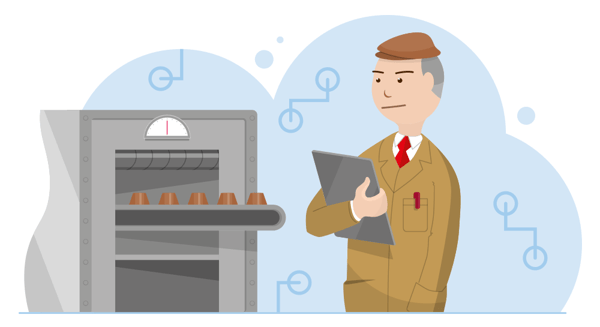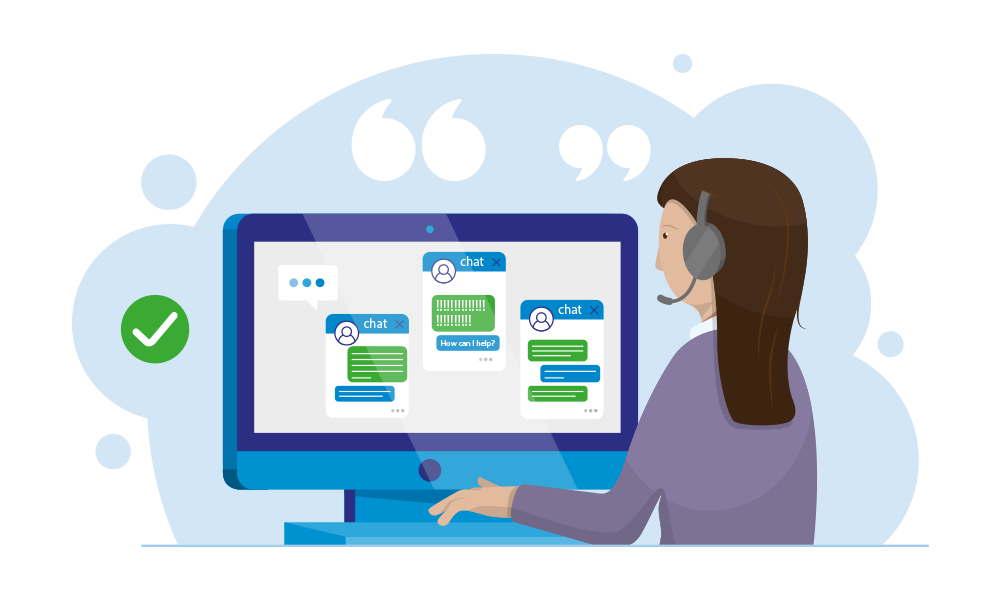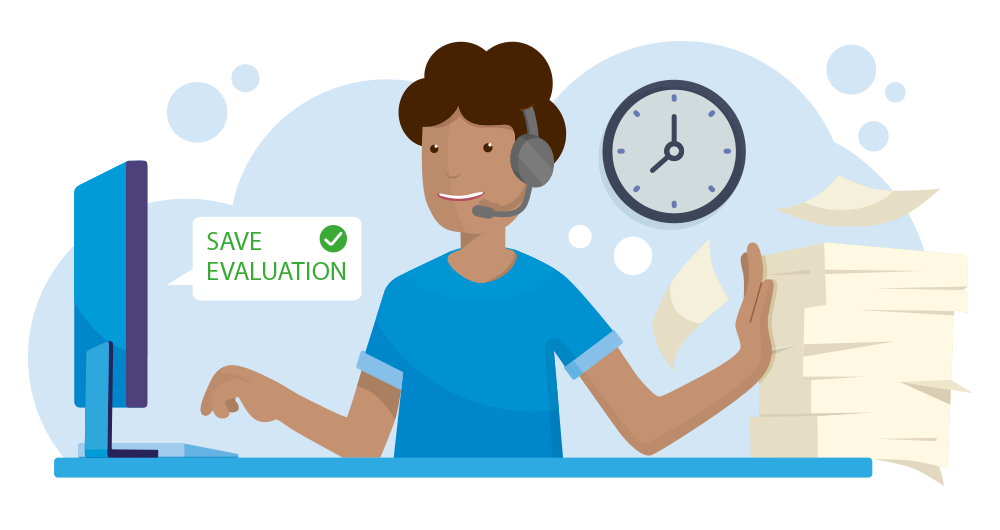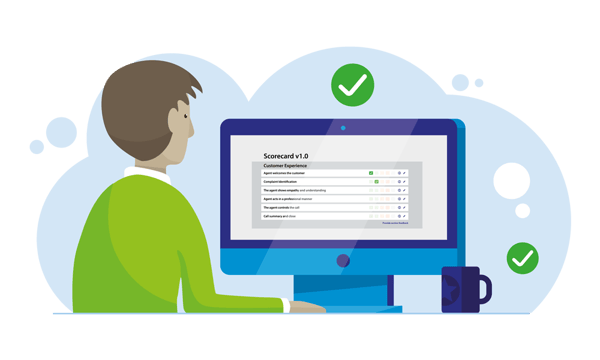Quality Assurance: Getting started with QA












In the world of customer service and contact centres, there are a number of different terms for quality assurance. Quality assurance, call monitoring, QA, interaction analytics, quality management, CRQM, conversation reviews, performance management, quality monitoring… it’s all pretty much talking about the same thing. Over time these terms were born from the development of operations and the technology within customer engagement facilities.
Quality assurance; it doesn’t sound too exciting does it?
Actually, it’s really important for a number of reasons but far too often is seen as a necessary task that has to be completed… a bit of a drudge.

So, what is quality assurance and how can we make it more interesting and beneficial?
This overview gives an insight into some common QA questions:
Quality assurance originated from a Quality control function used in manufacturing. It related to checking the quality of a product or service before it was released to consumers, i.e. a sample of chocolate bars may be tested and the quality checked against certain standards before the batch is distributed.

In a contact centre or customer services environment, it’s slightly different… although you’re still likely to find lots of chocolate! The quality assurance process reviews the quality of an interaction or conversation that has already taken place with a customer, something that has already happened.
It involves assessing the interaction against a set of criteria and allocating a score that can be used to indicate the relative quality of that interaction or sets of interactions.
The term relative is important as scores are relative to the expected level or score for that individual or service.
So, it can be seen that measuring quality has developed but there are many similarities between quality control and quality assurance in the way that it plays an essential role in measuring, managing and improving quality and most importantly for contact centres; the customer experience.
The original reason for the introduction of quality assurance was to ensure that the standards of service provided to customers were being met. In the early days this was often seen by staff as ‘checking up’ by management and as a result was treated with suspicion. Agents complained about an invasion of their privacy and listening in being intrusive.
Happily, this has changed considerably and quality assurance is now regarded as a process that delivers many benefits, such as:
Satisfied customers stay with you for longer and buy more services.
Engaged agents deliver a superior, more efficient service which improves the performance of all metrics.
More efficient interactions combined with fewer repeat contacts enables you to handle more queries and generate more sales with fewer staff.
Produce robust risk & compliance reporting to help you reduce exposure, complaints and demonstrate the fair treatment of customers to stakeholders.
Significant improvements in productivity due to purpose built quality assurance software.
Most importantly, quality assurance programmes have increased the quality of service provided to customers.
Having the ability to monitor the content and style of customer interaction has enabled team managers to identify the strengths and weaknesses of individual agents and teams. They’ve then been able to take positive action to develop the service through a variety of development activities.
Agents have benefited enormously from the development in quality assurance processes. Where it works well, agents understand their role and there’s a clear expectation of how they should serve customers. They receive regular feedback on their performance and should also receive customer service coaching to help them to improve their performance. The process can also highlight the need for additional formal training which should be made available where required.

It’s important that agents are given the right support, encouragement and tools to enable them to do the job to the best of their ability.
Agents involved with quality have a much clearer understanding of how they’re performing in the eyes of others. Issues can be identified and resolved much faster with regular feedback sessions and one to ones. Plus, an open communication dispels mistrust.
Agent satisfaction levels should be higher as a result of a good quality assurance process providing it’s well managed and implemented.
Increased levels of agent satisfaction translates into a number of tangible business benefits.
Early customer service teams or call centres were little more than telephone hunt groups.
In terms of quality assurance, they developed the facility for a supervisor to listen to a call when sitting next to an agent. But that’s about as far as quality checking went.

In the 1990’s contact centre technology developed quite dramatically. These developments enabled queuing systems to ensure that calls were acknowledged whilst waiting to be answered and then distributed to agents fairly. This had an impact on quality measurement.
Agents were no longer able to determine which call they took and therefore could not only take the easy ones.
Additional channels were introduced in the 2000’s to enable customers to contact organisations through email. These mails were often dealt with by the contact centre during quiet call periods.

In the last decade there has been a further development to a multichannel contact centre dealing with Live Chat, Video, Webforms and other emerging channels. The development of web-based systems and cloud-based applications has also made a significant change to the way that a customer service operation and quality is managed.
1980’s:
1990’s:
2000’s:
2010’s:
In recent times, quality assurance has developed through to a much more sophisticated multi-channel offering that scores and tracks individuals and teams performance. Quality of service is key to customer service and retention so measuring it is important.
But it’s not just about measuring. Next we’ll look at the range of activities involved in quality assurance.
A quality assurance process will look different to each area of a business. Generally, companies that have dedicated resource are equipped to develop the most effective processes and frameworks. A good quality assurance framework should be constantly monitored and applied consistently to improve scores across all departments. If you want to know more about how to develop a successful quality assurance framework, you can read about it here.
The need to measure quality has already been discussed but it is not as simple as first suggested. When thinking about the metrics used there a number of options including measuring individuals, teams and the overall service. Measures can be taken for different channels so that a direct comparison can be made.
The elements you choose to measure will be entered onto a scorecard. This means that the same measurements are used consistently to create an accurate analysis. When looking at building the elements of a quality scorecard, you’re probably going to look at the following key areas:
You’ve probably heard of some of these key elements of quality assurance evaluations, but we’ll go into a little more detail in section 6 below.
The need to score is self-explanatory but the scoring mechanism can vary considerably by both the thing that is scored but also the way that it is scored. Early scoring was simplistic in many cases and focused on ensuring certain components were included in calls and these were then recorded manually in spreadsheets and even paper records.

Today’s world is different with automated solutions to capture historical interactions and score them online with immediate feedback available. The items scored has also developed with a greater range of ‘soft skills’ and customer interaction facets used. For many organisations, producing a quality score is sufficient.
The scoring is important to share with the agents so they have a clear understanding of what’s being measured and the expectations associated with that measure. They need to be able to understand the nuances of certain situations and be confident that if a certain section of a call is not appropriate then they will not be penalised for not using the correct phrase or call component. A good example of this would be that if a caller has raised an issue that cannot be resolved it is not always appropriate to ask them if there is ‘anything else I can help you with’.
Top Tip: Ensure that scoring is flexible enough to measure what is important in that transaction and negate inappropriate components.
Another important area for consideration when discussing scoring is the need for calibration i.e. ensuring that all scoring is equal. This really becomes important when there are multiple assessors and a calibration mechanism or process is required to ensure fairness and equality throughout scoring.
We’ve covered 6 Common Challenges with Calibration and how to overcome them, in a webinar. Check it out.
The real benefits come from using the data. Not all organisations have the ability to analyse the quality data in as much detail as they would like. So, it’s important to prioritise and look at what’s important.
Look for outlying data – high or low exceptions, or look at the trends. Trends are really interesting as they can start to highlight areas of degradation or improvement. In both cases there is a cause and effect to be considered.
If the trend is one of a reducing score for a particular component i.e. Greeting, then the Greeting data should be analysed in more detail to find out what is causing the reduction. The outcome from this may be the need to reinforce the Greeting stage of a call and what is expected.
Top Tip: Use the Quality Data to develop improvement plans for process and performance.
Providing feedback is critical in contact centres.
Without feedback, QA just becomes data collection, a numbers game and the potential value is lost.
Agents and teams need to be given good feedback about their individual and collective performances. The ability of the team manager and their approach to giving feedback is one of the most important factors in delivering an efficient and effective service.

A good team manager will provide supportive, encouraging feedback where there are areas of development. Where performance is very good, the team manager will use the data and the analysis they’ve completed to ensure that the quality of feedback delivers improvement or provides the motivation for agents to maintain high performance.
Top Tip. Ensure team managers have the correct skills to be able to provide quality feedback.
Team managers are often promoted from being high performing agents but they do not have the skills to manage performance or people. Managers need training and support to develop these skills especially when dealing with poor performance. The lack of these skills will impact the overall performance and could lead to higher levels of attrition at both agent and team manager levels.
The delivery of feedback is a really important aspect of the process and balancing out the constructive criticism with positive feedback is important to ensure the agent’s morale isn’t affected by badly presented feedback.
Finishing on a high note and reinforcing your appreciation of the agent’s good work is effective when providing verbal performance feedback. We joined forces with Caroline Cooper, a customer service and training expert, to deliver a session on ‘How to deliver effective feedback’, which we’d recommend you watch. It has some great hints and tips to make sure your feedback is constructive, effective and goes un-challenged!
The final stage in the process is titled Improve. This does not refer to improving the agent performance which is described in the previous section, it refers to the improvement of the operating environment that the agent is working in.

Team managers listen to calls, review chats, read emails and look at other channels. Engaging in a quality assurance process allows team managers to:
These are the things that cause agents to struggle or customers to complain. They need to be captured and resolutions sought to rectify them.
Team managers have the opportunity to use the data and the information obtained through quality assurance to improve quality rather than just measure it.
We shared some tips on how to score quality assurance elements earlier, but we didn’t really go into how you would go about scoring. When defining a QA scorecard, use the key business objectives as a basis.
Ensure your QA scorecard is aligned to the overall business strategy and any important KPIs are factored in.
We mentioned them before, but here they are again. Your quality scorecard is likely to include (amongst others) the following key areas:
And we’re going to look at each in a little bit more detail now.
In a sales contact centre environment, qualifying and probing questioning skills are paramount in hitting targets. So, where the main business objective is to drive sales, analysing the quality of these skills during calls is an important part of success.
When customers are sent written correspondence, the grammar quality gives a big impression of the company. Therefore, agents that use email, chat messaging or any other type of written communication should be competent in using a high standard of grammar.
Some companies choose to have a sign-off process for any written correspondence going out to customers but this isn’t possible with instant chat messaging, so QA is a good way to maintain consistency and keep quality standards high.
Whilst you might think grammar checks are more relevant for written correspondence, the choice of grammar used in telephone conversations can also reflect poorly on the company.
This is why some QA teams choose to score calls on this category as well as written customer communications.
Another key area of effective customer service is being able to quickly build rapport through personalised conversations. This means not just reading off a script but really listening to the customer and tailoring a response to suit the situation and who you’re dealing with.
Being able to speak confidently about products or services is an important part of the agent’s role. Providing correct information and doing so quickly (i.e. not putting the customer on hold whilst finding out the information), is essential to delivering a high quality customer experience. This should be monitored on any customer service related role.
When an agent cannot overcome objections particularly well, this can lead to customers asking to speak to the manager, or even requesting to log a complaint.
An agent that is stronger at overcoming objections is more likely to prevent a call turning into a complaint, which could save the company significant time and money.
By monitoring and providing feedback on this area, agents can improve their approach to handling objections.
In highly regulated industries like utilities, banking and insurance, compliance is a high priority. It is crucial that agents have a good knowledge of compliance and their responsibilities.
Having a QA category that reviews an agent’s performance in maintaining compliance is vital to help the business provide the best customer service and avoid fines at the same time.
Monitoring quality assurance in customer services or call centres isn’t limited to the 6 topics above. We’ve got a whole guide to ensure your call centre quality assurance process is following best practice. It covers some essential metrics and also some KPIs your quality assurance process must measure. Check it out here.

Want to see example QA scorecard template? Here we’ve got three quality scorecard templates you can access for free. And they’re purpose built for Customer Services and Contact Centres!
We’ve covered a lot on quality assurance in this article, you should now:
The EvaluAgent team are on hand to chat at any time. We love to talk about quality, as sad as that may sound!
Whether you’re picking up QA for first time or looking at a deep clean of your existing QA processes, we’re happy to chat it all through with you.
For more resources on quality assurance, employee engagement, coaching and feedback and other CX topics, head over to the Knowledge Hub page.